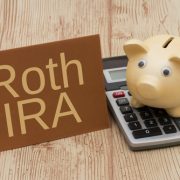Are There Five Funding Options for Self-Directed IRAs?
When most people talk about funding IRAs, they usually talk about one of three funding methods. Contributions, transfers, and rollovers. But when you break things down, you will see that you have more options for funding a Self-Directed IRA than only three. There are actually five different types of funding options that are worth talking about here. These include:
- Contributions
- Conversions
- Direct Rollovers
- Indirect Rollovers
- Transfers
Sound complicated? It is not. But if you want to get your Self-Directed IRA journey started, it is worth taking a few moments to review what these funding options are and how they will work for you.
Funding a Self-Directed IRA Via Contribution
Perhaps the most obvious and direct route to fund a Self-Directed IRA is simply to contribute to it. Remember, however, that the IRS tightly regulates how much money you can use from your personal funds to direct toward a Self-Directed IRA—or any IRA, for that matter.
If you are funding via contributions, you will want to know what your current contribution limits are. Unfortunately, there are so many different account types and rules here, that we cannot directly tell you what those limits might be. For example, if you are a certain age and have a Self-Directed Roth IRA, your contribution limits to that account may be $6,000.
Using Conversions to Fund a Self-Directed IRA
A conversion is what happens when you convert cash and/or assets from one account into another. For example, converting a Self-Directed Traditional IRA into a Self-Directed Roth IRA may be possible. However, keep in mind that taxable consequences are something to watch out for here.
Direct Rollovers for Self-Directed IRAs
You have likely heard of “rolling over” an IRA. But what is the difference between direct and indirect rollovers? Let us start by handling the direct rollover.
A direct rollover is straight forward. It is what happens when you transfer money directly from one account to another. There is no middle step in between, and the money never enters your hands personally. The money remains in retirement accounts. This can be a convenient way to move money when the situation is applicable.
Indirect Rollovers for Self-Directed IRAs
If a direct rollover means that no money ever hits your personal accounts, then you can guess what an indirect rollover means. What essentially happens with an indirect rollover is that your money moves from one account to your hands. You will then have 60 days or less to re-invest the funds within a new plan. Keep in mind that money will be withheld for taxes. A Self-Directed IRA administration firm may be able to help you with funding via an indirect rollover if the situation applies.
Using Transfers to Fund a Self-Directed IRA
So far, we have looked at ways to fund a new account. But what if you have a retirement account that is already similar to another account? This is actually a trustee-to-trustee transfer, so you, as the investor, will not take possession of the money. And because you are transferring between two like accounts, the complications are minimal. You will not take possession of the cash. And because it is such a simple transaction, using like accounts, there will not be tax consequences for this style of funding. However, it does require that you have an already existing like account already in place.
What Type of Funding is Best for You?
Understanding what is best for you requires a closer look at your own current finances. There may be situations in which you are limited because of the tax consequences. Work with a great Self-Directed IRA administration firm if you want confidence in the process.
Interested in learning more about Self-Directed IRAs? Contact American IRA, LLC at 866-7500-IRA (472) for a free consultation. Download our free guides or visit us online at www.AmericanIRA.com.






